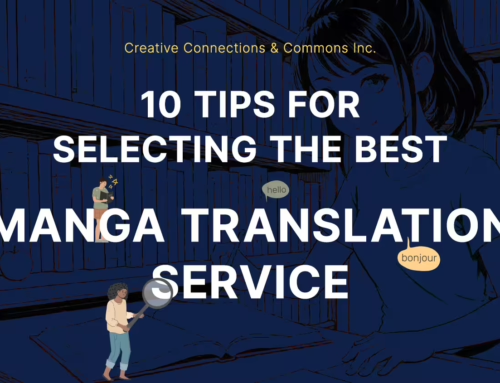Understanding the difference between webtoon and manga gives readers more insights into the appreciation for each medium. Graphic storytelling is undeniably one of the most popular art forms. Regardless of where they come from, audiences worldwide enjoy comics. Furthermore, Asian graphic novels only boost the popularity of visual narratives.
Given the expansion of digital platforms, manga and webtoons become increasingly accessible. Likewise, their distinctions become relevant. In this blog, we look into the intricacies of each medium’s art styles, storytelling techniques, and cultural nuances. Take a look.
Key takeaways
- The difference between webtoon and manga lies on art styles, storytelling techniques, and cultural nuances.
- People might pit manga vs manhwa against each other for their distinct characteristics but it all depends on reader preferences.
- Webtoon vs manga is a discussion on accessibility, with the former being online and the latter being print.
Table of contents
- Understanding Each Medium: What Is the Difference Between Manga and Webtoon?
- Art Style Differences
- Storytelling Techniques
- Cultural Influences
- Professional Translators on the Difference Between Webtoon and Manga
- Why Choose a Professional Translator
- CCC: Making Webtoons and Manga Accessible to Global Audiences
Understanding Each Medium: What Is the Difference Between Manga and Webtoon?
Those who ask about the difference between webtoon and manga almost always know that they come from different countries. This assumption is correct to an extent. Webtoons are from South Korea while manga is from Japan. However, it is only true when discussing both in the same context.
When we separate “webtoon” from a discussion about webtoon vs manga, it can refer to its original meaning. That is, a webtoon is a type of digital graphic novel or comic. Webtoons can come from anywhere. Thus, a webtoon can be South Korean in origin, making it technically a manhwa.
Manhwa is the South Korean equivalent of Japanese manga. When it comes to manga vs manhwa, both terms refer to comics and graphic novels coming from each country. Traditionally, manhwa and manga publishers print these works in black and white.
Meanwhile, webtoons can be manga or manhwa, in which the work from either original country is published online. Being online publications, they eliminate the limitations of print media. Thus, they are usually available in full color.
From here on, we will use “webtoon” to refer to comics of South Korean origin and manga for Japanese. Still, understanding the difference between each term is important when discussing them in other contexts.
Art Style Differences
The art style is almost immediately the first distinction any reader will notice between webtoons and manga. After all, readers go to different places to read either manga or webtoons. Usually, webtoons feature vibrant, full-color art. These works have dynamic panel layouts optimized for mobile devices. Thus, readers scroll vertically to read the story.
Meanwhile, manga has a monochromatic, black-and-white art style. Manga artists or mangaka enhance colorlessness by utilizing intricate linework and tonal shading techniques to convey depth and emotion. Mangaka are meticulous with their panel layouts. They craft them for printed pages, guiding readers through the narrative.
Pro tip: Pay attention to the pacing of webtoons and manga. For webtoons, the vertical orientation keeps actions in the succeeding panels a surprise. Mangaka can also achieve this technique in print media somehow. For instance, horror manga usually has small panels in anticipation of full spreads of monsters upon flipping the page. These visual storytelling techniques give way for readers time to expect what comes next.
Storytelling Techniques
Webtoons and manga use unique storytelling techniques given their publication types. In particular, webtoons often use episodic storytelling. Audiences can expect webtoon publications to release chapters regularly to maintain engagement. Moreover, regular chapter releases allow flexibility in pacing and narrative structure.
Meanwhile, manga tends to follow a more structured narrative format. Traditionally, published manga feature arcs. Writers carefully plan these storylines and execute them over multiple chapters. Publishers can also get involved in the release of the work, promoting certain arcs as they release them.
Note: Audience preferences may influence the pacing and progression of manga or webtoon stories. Depending on reception, writers might have to revise their stories accordingly. Audience impact heavily relies on cultural influences.
Cultural Influences
Cultural nuances make manga and webtoons appealing to global audiences. Each country’s unique sensibilities influence story themes, settings, and character archetypes. For example, webtoons tend to reflect contemporary South Korean culture.
Often, webtoons incorporate elements from pop music and drama series. Societal norms and issues are also present in the stories, whether it is an action, thriller, fantasy, or romance webtoon. These provide readers with insights into Korean lifestyles and values.
Similarly, manga reflects the rich cultural heritage of Japan. Traditional folklore, historical events, and social norms are present in many stories. Popular manga usually promote themes of honor, perseverance, and camaraderie, particularly manga aimed at young audiences.
Essentially, webtoons and manga reflect the core values ingrained in South Korean and Japanese societies. While nuances may differ, the cultural wisdom they offer aim to entertain and impart moral lessons.
Professional Translators on the Difference Between Webtoon and Manga
Given the cultural nuances of webtoons and manga, adapting the works for various audiences requires particularity. Professional translators are vital in bridging the world of these graphic novels to global audiences.
Customarily, Korean webtoon creators target Korean readers. Likewise, Japanese mangaka write for Japanese audiences. Meanwhile, audiences who have no South Korean or Japanese linguistic or cultural backgrounds may not get the full reading experience.
However, skilled translators and localizers understand the importance of preserving the essence of the original work when making it accessible. When globalizing a manga or webtoon, publishers work with professionals that possess in-depth knowledge of their respective cultural contexts.
For Japanese work, publishers will hire manga translator teams and manga localization experts. Likewise, publishers that want to maintain Korean storytelling conventions will hire webtoon translator professionals.
Furthermore, these professionals understand the nuances of the target audience’s culture. For example, consider manga localization for an English-speaking audience. Japanese dialogue and sound effects must resonate with the target audience as they do with the original readers.
Thus, manga typesetting experts would clean the original text and adjust panel formats to meet new standards. At the same time, they maintain the essence of the story just as original audiences were meant to experience it.
Why Choose a Professional Translator
Consider getting a professional to oversee your webtoon or manga translation project. When it comes to fan vs professional manga translation or webtoon localization, understand the implications of each option.
Translations by fans and professionals each have advantages and disadvantages. Essentially, it comes down to resources. While fans have the passion to share Japanese or Korean comics with their communities, professionals have the tools and expertise.
Furthermore, translating webtoons and manga has legal and ethical implications. Fan translations typically involve unlicensed work. Fans would scan and translate the work by themselves without permission from the original author. Usually, it’s only for personal use and among friends.
Meanwhile, professional translators ensure compliance with copyright laws. In addition, they respect the creator’s and publisher’s intellectual property rights. Professionals also have trained and licensed translators to work on manga and webtoons.
CCC: Making Webtoons and Manga Accessible to Global Audiences
Webtoons and manga each feature unique cultural influences and artistic styles that mainly appeal to local audiences. However, global audiences can still appreciate and experience these stories through professional translators and localizers like our experts at CCC.
We specialize in providing translation services for both mediums and more. With expertise and cultural sensitivity, our team ensures that webtoons and manga maintain their original essence while being accessible. Let’s discuss your next global storytelling project. Contact us.









